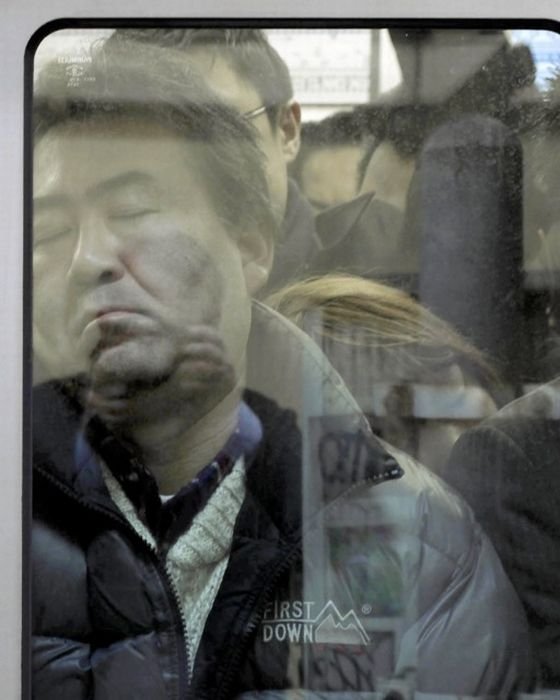|
|
Tokyo Compression By Michael Wolf
|
The formalism and deadpan approach of Architecture of Density echoes the work that emerged from the Düsseldorf school of Bernd and Hilla Becher. Like the work of Andreas Gursky or Thomas Struth, Wolf’s photographs reveal a desire to document and connect with the world around him, but with a contemporary visual approach. Contrary to the lyrical drama of ‘classic’ documentary photography, these images are coolly detached from their subject and the photographer’s presence behind the camera is barely perceptible.
This work on the architecture of Hong Kong can also be linked to the new photographic approaches that emerged in the late 1960s and 1970s in the United States. The landmark 1975 exhibition, New Topographics: Photographs of a man-altered landscape, brought together a group of photographers who, in the sprawling post-industrial landscapes of the new American West, found a mirror for the transformation of the structure of American society. In the same way, Wolf found his inspiration in Hong Kong and China, places where ever-shifting cityscapes provided him with constant stimulation and the opportunity to document the many faces of this emerging superpower.
However, contrary to many of the New Topographics photographers, Wolf is not a ‘pure’ photographer of landscape, as is evident from the diverse work that he has produced in China. He lays out his multi-layered approach in his books Hong Kong: Front Door/Back Door and Hong Kong Inside Outside. In the Hong Kong Back Door series, he carves out fragments from the city streets: from workers’ gloves drying on a spiral of barbed wire to the chaotic labyrinths formed by plumbing and ventilation pipes. By focusing on these seemingly insignificant details, Wolf succeeds in capturing the beauty of the vernacular while simultaneously illustrating China’s concern with functionality over form. Although people are almost entirely absent from the series, the barely perceptible traces of their existence present in Architecture of Density take center stage here. In one image, a single red rubber glove placed on top of a metal pole lays claim to this territory like a flag planted in the ground: a symbol of the space being reclaimed by the city’s inhabitants. With images like this one, Wolf sheds light on the seams of the city, the zones where the lack of private space forces the city’s inhabitants to reclaim public space to fit their basic needs.
In Hong Kong Inside Outside, Wolf pairs the architectural abstractions of Architecture of Density, with 100x100, a study of one hundred interiors in one of Hong Kong’s oldest housing complexes. Titling his series 100x100 as each apartment in the complex measures exactly one hundred square feet, Wolf uses a typological approach, adopting the same vantage point for each image, once again evoking the approach of the Bechers and the New Topographics. However, in stark opposition to the distance and formalism of Wolf’s architectural photographs, these images have a quasi-journalistic style. Although the inhabitants of these spaces are present in each image, it is not so much their portraits that are striking as the extraordinarily diverse environments that they have created for themselves in these standardized spaces. Together with Hong Kong Back Door, the series highlights the ingenuity and adaptability of these citizens and their surprising strength within the confines of the city’s concrete shell.
|
|









